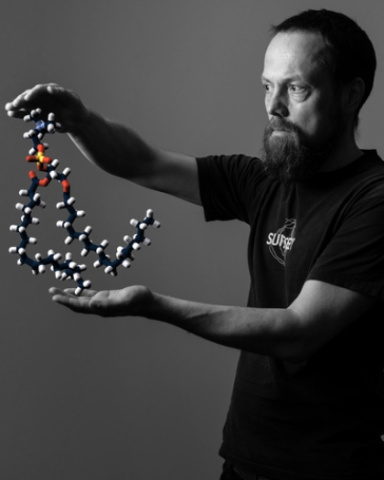
Markus Sakari Miettinen
Markus Miettinen did his PhD in Theoretical and Computational Physics under the supervision of Mikko Karttunen at Aalto University, Helsinki, Finland. This was followed by post doctoral research in Germany in the groups of Zoya Ignatova (at Institute for Biology and Biochemistry, Potsdam University) and Roland Netz (at Department of Physics, Freie Universität Berlin), chiefly funded by the two independent post-doctoral grants he won from the European Molecular Biology Organization (EMBO Long-Term Fellowship 2011–2012) and the Volkswagen Foundation (VolkswagenStiftung Post-Doctoral Fellow 2012–2015). In 2016, he joined the Department of Theory and Bio-Systems lead by Reinhard Lipowsky at the Max Planck Institute of Colloids and Interfaces (Potsdam, Germany), where he was a research group leader until becoming an associate professor at University of Bergen (UiB) Department Chemistry and research group leader at the UiB Computational Biology Unit in 2022.
Sign in to Spring ITAPA 2025
-
High-fidelity Biomolecular Modelling
Although molecular dynamics (MD) simulations are a widely used tool in (bio)sciences, they often actually fail to provide a veritable description (e.g. matching NMR data within experimental accuracy) of the conformations and the dynamics of the molecules simulated—a crucial prerequisite for using MD to intuitively interpret such high-resolution experiments. These failures can largely be attributed to the quality of the underlying MD models (force fields), improvement of which is hindered by the lack of comprehensive comparison to experiments, and outdated approaches, such as hand-tuning parameters. The High-fidelity Biomolecular Modelling Group employs open-science approaches to test and data-driven optimization methods to improve biomolecular force fields. We strive to make such force-field-optimized MD a tool for Integrative Structural Biology: Combining data from multiple experimental techniques to generate physics-based high-fidelity structural models with realistic structure and dynamics. I argue that such approach could eventually evolve MD into a bona fide Ångström-resolution microscope.
